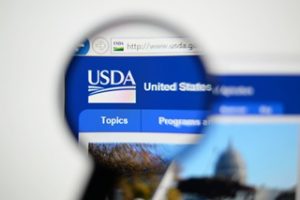USDA Awards $85.8 Million in Funds to the Small Internet Service Providers That Serve America’s Farmland


In late July of this year, the United States Department of Agriculture (USDA) awarded $74.8 million in telecom loans and $11 million in Community Connect grants to small Internet service providers (ISPs). These funds are currently at work subsidizing a range of rural broadband expansion projects in seven states.
Although (unlike the Federal Communications Commission; FCC) telecom is not a main focus of the USDA’s work, the department has reiterated several times that the benefit of broadband to farmers is enough to justify the agriculture regulator’s involvement in its expansion.
The USDA sees Internet access as, in this day and age, a basic utility. In a July press release, USDA Secretary Tom Vilsack compared the department’s investments in rural broadband expansion to its investments in the expansion of the electricity grid 80 years ago. Vilsack’s bold comparison places a great deal of importance on, in general, the government’s, and, in particular, the department’s rural broadband expansion initiatives.

Vilsack’s importance may not be misplaced. Farmers use the Internet for a diverse range of work-related tasks including ordering equipment and monitoring grain-drying bins [1]. Broadband coverage also benefits farming communities in the same way it benefits all rural communities – by improving access to information, increasing the potential for social and business-related communications, and expanding entertainment services.
Over the years, the USDA has made a significant sum of money available for broadband expansion including $77 million in Community Connect grants alone. The $85.6 million cocktail of loans and grants it awarded in July goes to sorely needed infrastructure improvements in the following seven states (listed by total amount of funds received).
Awards to small internet service providers:
– In Minnesota, the USDA awarded Garden Valley Telephone a $12.6 million loan to upgrade their fiber and electronics systems. Consolidated Telephone received a $12.27 million loan to, among other things, expand bandwidth capacity and add a new fiber ring to their infrastructure. Minnesota’s Northeast Service Cooperative (NESC) received two $3 million grants for two projects that extend broadband access to the Fond du Lac Reservation. Since the USDA began funding broadband expansion, it has put $20 million towards providing broadband service to tribal areas.
– In Montana, the USDA awarded Triangle Telephone Cooperative Association a $29.95 million loan to upgrade their system with fiber. The upgrade will increase reliability, bandwidth capacity, and data throughputs.
– In South Carolina, the USDA awarded FTC Communications a $12.38 million loan to upgrade their network to 4G-LTE. The transition will increase data throughputs up to 10 times over 3G.
– In Wisconsin, the USDA awarded the LaValle Telephone Cooperative a $7.61 million loan to deploy fiber and replace a switch.
– In Virginia, the USDA awarded Scott County Telephone Cooperative a $2.1 million grant to build a broadband network with one gigabyte of bandwidth for 540 locations in Dickenson County.
– In Oklahoma, the USDA awarded @Link Services a grant of nearly $1.5 million to expand broadband services in Seminole County.
– In Alaska, the USDA awarded the Arctic Slope Telephone Association Cooperative, Inc. a $1.4 million grant to extend broadband coverage to Point Hope and to prepare the network for the construction of an undersea fiber connection within the next two years.
The awardees listed above constitute a mix of small, local telecommunication companies and customer-owned cooperatives. National ISPs often neglect sparsely populated areas where the profit margin is small and, therefore, they have little to gain. Local companies and cooperatives have more than profit to gain by serving their communities. They operate at a lower profit margin because they are driven, also, by the very real need to bring Internet to themselves and their neighbors.

Because they are serving themselves, local companies and cooperatives sometimes go above and beyond the call of duty. While mobile broadband and satellite are the easiest ways to reach rural communities, we can all agree that neither is the objectively ideal way to get online. But, out of the frustration of 500 millisecond latency are born great things.
Many of the USDA’s awardees deploy fiber-optic cable to areas where rural users desire a faster, more reliable way to access the Internet (i.e. a cable connection). Fiber-optic connections increase throughputs dramatically. The LaValle Telephone Cooperative, for example, is able to offer customers download speed bursts of 60 Mbps [2].
If you live in one of the areas targeted in the USDA’s most recent funding distribution, look to your local ISP for rural broadband developments. Perhaps surprisingly, local ISPs sometimes offer plans that trump what national ISPs offer in a given locale.




